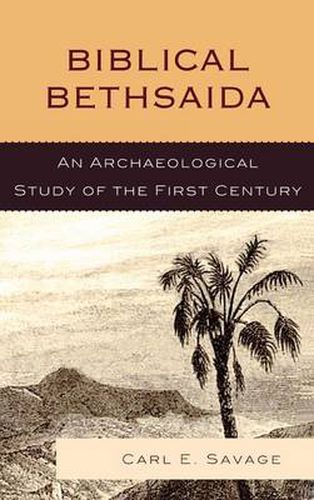Readings Newsletter
Become a Readings Member to make your shopping experience even easier.
Sign in or sign up for free!
You’re not far away from qualifying for FREE standard shipping within Australia
You’ve qualified for FREE standard shipping within Australia
The cart is loading…






In his illuminating, well-researched book examining the site of Et-Tell, also known as Bethsaida, Carl E. Savage explores archaeological evidence to offer readers a portrait of the religious beliefs and practices of the community living near the north shore of the Sea of Galilee during the first century CE. In the study of the cultural and social matrix of the first century in the Galilee, scholars have commonly prioritized written sources over archaeological evidence because written sources seem to contribute more directly to an understanding of the religious beliefs and practices of a community. However, there exist many competing views of the landscape during that time due to the varying interpretations of the textual sources. Using archaeological data from Bethsaida itself, Savage investigates the material practices of Bethsaida’s ancient inhabitants, describing these practices as significant indicators of their sense of place both ideologically and geographically. He evaluates the historical plausibility of various social reconstructions for the region, and finds that the image that emerges of first-century Bethsaida is one similar to those of other Jewish communities in the Galilee.
$9.00 standard shipping within Australia
FREE standard shipping within Australia for orders over $100.00
Express & International shipping calculated at checkout
In his illuminating, well-researched book examining the site of Et-Tell, also known as Bethsaida, Carl E. Savage explores archaeological evidence to offer readers a portrait of the religious beliefs and practices of the community living near the north shore of the Sea of Galilee during the first century CE. In the study of the cultural and social matrix of the first century in the Galilee, scholars have commonly prioritized written sources over archaeological evidence because written sources seem to contribute more directly to an understanding of the religious beliefs and practices of a community. However, there exist many competing views of the landscape during that time due to the varying interpretations of the textual sources. Using archaeological data from Bethsaida itself, Savage investigates the material practices of Bethsaida’s ancient inhabitants, describing these practices as significant indicators of their sense of place both ideologically and geographically. He evaluates the historical plausibility of various social reconstructions for the region, and finds that the image that emerges of first-century Bethsaida is one similar to those of other Jewish communities in the Galilee.